Membranes for Energy and the Environment
A special issue of Membranes (ISSN 2077-0375). This special issue belongs to the section "Membrane Applications for Energy".
Deadline for manuscript submissions: 15 August 2024 | Viewed by 773
Special Issue Editors
Interests: solid state ionics; electrochemical energy technologies; ion-conducting polymers; ionomer membranes; nanostructured materials
Special Issues, Collections and Topics in MDPI journals
Interests: development of ionic polymeric conductors; synthesis of organic-inorganic hybrid materials; sol-gel synthesis of nanomaterials; stimuli-responsive polymers; structure-property relationship; nanostructured materials
Special Issue Information
Dear Colleagues,
Membranes are critical components for sustainable energy and the environment, and they hold promise for clean technology applications. They enable the transportation of ions and the selective separation of gases, and they comprise a vast panel of compositions and structures, including inorganic, organic, and hybrid membranes.
Scope:
In this symposium (https://www.european-mrs.com/membranes-energy-and-environment-emrs), we call for contributions on the synthesis, physical chemistry, properties, function, and performance of membranes, as well as their broad range of applications, including membrane technologies used for water treatment and desalination, separators used for fuel cells, batteries, electrolysers, membrane actuators, or gas separation membranes (including those for hydrogen and CO2.
Metallic and ceramic membranes are mostly used for gas separation, permeation, and high-temperature applications (such as solid oxide fuel cells).
Polymer membranes, especially ionomer membranes, are associated with low- and intermediate-temperature applications, including within the vast fields of water purification and desalination. Ionic membranes are particularly important for applications in energy storage and conversion, including separators used for metal batteries and polymer fuel cells.
This symposium will discuss various topics, from the preparation to the functional application of membranes. Contributions may include various techniques for the synthesis and shaping of membranes, their physicochemical properties and mechanisms, or their functional properties and processes. Studies on the performances of various applications and reports on composition/structure/property/performance relationships are particularly welcome.
Given the growing urgency for environmental and energy solutions, this meeting will cover the latest advances in membrane science, linking fundamental research with practical applications, and will provide an optimal venue for a lively exchange of information.
Potential topics to be covered are as follows:
- Membrane synthesis;
- Membrane characterization;
- The physical chemistry of membranes;
- Fuel cell and electrolyzer membranes;
- Battery separators;
- Membrane actuators;
- Water purification and desalination membranes;
- CO2, H2, and other gas separation membranes;
- Catalytic membranes.
Prof. Dr. Philippe Knauth
Prof. Dr. Maria Luisa Di Vona
Prof. Dr. Hongying Hou
Guest Editors
Manuscript Submission Information
Manuscripts should be submitted online at www.mdpi.com by registering and logging in to this website. Once you are registered, click here to go to the submission form. Manuscripts can be submitted until the deadline. All submissions that pass pre-check are peer-reviewed. Accepted papers will be published continuously in the journal (as soon as accepted) and will be listed together on the special issue website. Research articles, review articles as well as short communications are invited. For planned papers, a title and short abstract (about 100 words) can be sent to the Editorial Office for announcement on this website.
Submitted manuscripts should not have been published previously, nor be under consideration for publication elsewhere (except conference proceedings papers). All manuscripts are thoroughly refereed through a single-blind peer-review process. A guide for authors and other relevant information for submission of manuscripts is available on the Instructions for Authors page. Membranes is an international peer-reviewed open access monthly journal published by MDPI.
Please visit the Instructions for Authors page before submitting a manuscript. The Article Processing Charge (APC) for publication in this open access journal is 2700 CHF (Swiss Francs). Submitted papers should be well formatted and use good English. Authors may use MDPI's English editing service prior to publication or during author revisions.








